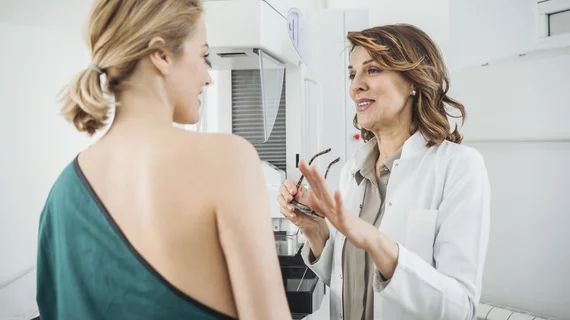Monochromatic mammograms capable of decreasing radiation dose and discomfort, study finds
Although mammography screening technology has come a long way since its inception in the early 1900s, there is still room for improvement. Experts recently found monochromatic X-rays can help enhance the way such exams are performed, sharing their findings in the European Journal of Radiology.
The team analyzed the results of previous studies that used a prototype system capable of generating monochromatic X-rays through fluorescence emission. The signal-to-noise ratio (SNR) was assessed as an indicator of image quality using different doses on breast phantoms of varying sizes. The results were compared to parameters from standard mammographic images
Researchers discovered that not only were monochromatic X-rays able to reduce a patient’s radiation dose by a factor of 5-10, but the SNR was also 2.6 times higher compared to the conventional system. The benefits were especially evident when imaging larger, more dense breasts. Even at a dose of 6.6 times lower than that of the conventional system, the monochromatic system showed superiority when using the 9-centimeter compressed breast phantom.
“It [monochromatic X-ray] has the potential for reducing radiation risks in mammographic exams. It is especially important for examining dense breast tissue where image quality frequently is suboptimal and limited in sensitivity,” Madan M. Rahani, PhD, with the Radiology Department at Massachusetts General Hospital, and co-authors wrote. “Breast density results in increased risk of higher stage cancers, which can minimize the mortality reduction benefit of mammographic screening.”
While the evolution of monochromatic X-ray in breast imaging is advantageous for all who receive mammograms, the study implies that the development is especially beneficial for those with increased breast density. This is mainly due to the modality's lower radiation dose and heightened sensitivity for abnormalities.
You can read the full study in the European Journal of Radiology.

